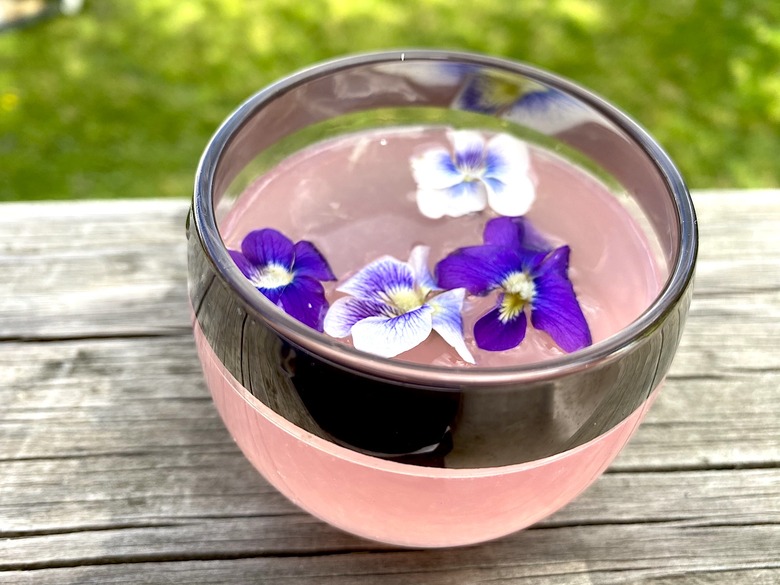Recipe Of The Day: Violet Lemonade
Come spring, violets begin to grow wild in gardens and backyards across the United States. For some, the purple flowers are pretty to look at. For others, they grow a little too much like weeds. But for those in the know, violets are delicate edible flowers that can be used in a multitude of ways. They can be candied, jellied, infused into a homemade creme de violette or — my family's favorite — used to make a special springtime violet lemonade recipe.
Mocktail Recipes Everyone Will Love
Are violets edible?
Yes, most kinds of violets are edible! Common blue violets, which are native to the United States and what you'll most likely find in your backyard, are among the many flowers and plants you can actually eat. Though they're edible from stem to bud, the stems and leaves are often discarded because they can lend a grassy taste. English violets — also known as sweet violets — look very similar but are found more often in the UK; they have a stronger scent and taste. Confederate violets, which are white with blue streaks, are a cultivated variety that are also edible. Do note that African violets, a beloved houseplant, are not edible and should not be consumed.
What are the nutritional benefits of violets?
Violets — like other members of the viola flower family — aren't just pretty, they are also nutritious. The leaves and flowers are actually good sources of vitamins A and C. Take heed before adding too many violets to your diet, though; they do contain saponin, the same compound that can make quinoa bitter if not rinsed. It's not bad for you, but some folks find they are more sensitive to it and too much can cause brief digestive upsets.
How to forage for violets
Of course, when engaging in any kind of foraging it is important to follow certain etiquette and safety rules. Be sure that you can confidently identify the flowers. Don't go around picking other people's violets without permission. And take note of where you are picking; your own backyard is ideal because it is away from car exhaust and because you can guarantee that they have not been treated by pesticides — and if you do treat your property with pesticides, then you should skip the backyard foraging.
How to make violet lemonade
The first step to making violet lemonade is to pick lots of violets! This is a wonderful activity with kids, or a meditative one on your own. Try to get mostly petals, but a little stem won't ruin anything. Next, steep the violets in hot water until the water turns a vibrant shade of indigo. Finally, mix it with lemon juice and simple syrup — and watch in amazement as the yellow lemon juice turns hot pink with the addition of the indigo-hughed water. Serve over ice and enjoy!
For a start-to-finish tutorial, watch this video on how to make violet lemonade — and be sure to check out the other videos on The Daily Meal's YouTube channel for all kinds of cooking hacks and tips.
Violet Lemonade
Ingredients:
- 2 cups freshly picked violets, plus more for garnish
- 1 1/2 cup hot water
- 1 1/2 cup freshly squeezed lemon juice (from 6 lemons)
- 3/4 cups simple syrup
- 1/2 cup cold water
Directions:
Step 1: In a glass measuring cup or bowl, combine 2 cups violets with 1 1/2 cups hot water. Stir and allow to steep for about 30 minutes, until the water turns indigo.
Step 2: Put the 1 1/2 cups lemon juice in a pitcher. Place a fine mesh strainer on top of the pitcher and pour the violet water in – watch as the lemon juice turns pink! Press down on the violets with a spoon to squeeze out liquid. Compost the violets.
Step 3: Stir 3/4 cup simple syrup and 1/2 cup cold water into the pitcher of violet lemonade, or to taste. How much simple syrup and water will depend in part on how tart your lemons are, and how sweet you like your lemonade.
Step 4: Fill glasses with ice and pour in violet lemonade. Garnish with fresh violets, if desired. Violet lemonade will also keep covered in the fridge for at least a few days.
.
